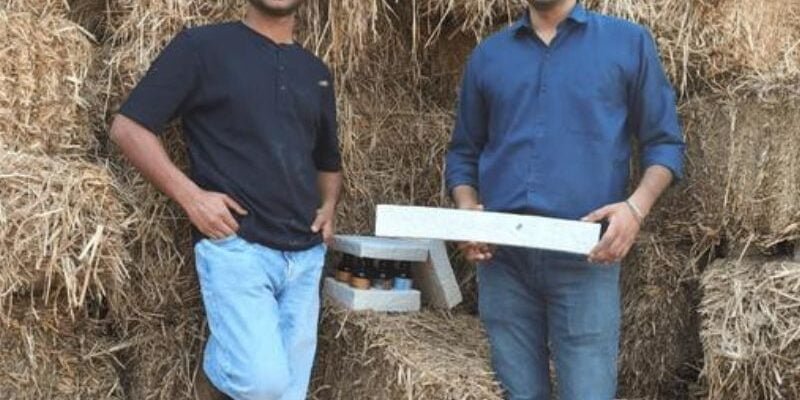Harnessing and turning the very cause of pollution we fall prey to into a medium of eco-friendly packaging, Dharaksha is working towards providing sustainable and economical solutions at scale.
CEO Arpit Dhupar and CGO Anand Bodh got the idea for a start-up when the former’s nephew created a childhood reminiscence drawing of a typical landscape. However, the sky depicted in the painting was in shades of grey. “This observation served as a wake-up call, highlighting the severity of the environmental situation and instilling a strong desire within the team to take action,” shares Dhupar.
Dharaksha was incubated at RCB (Regional Center for Bio-Technology) and initiated with on-ground research and development activities, including engaging with farmers in the villages of Punjab and Haryana to gain insights into the practice of burning stubble waste and understand the underlying reasons behind this phenomenon.
In 2020, the team decided to identify solutions for the problem of stubble burning through biotechnology. However, they encountered unforeseen challenges as the Covid-19 pandemic unfolded, including travel bans and various obstacles. The first plant was established in Faridabad.
Consequently, the expected timeline for their efforts, which would typically take 1-1.5 years, was significantly extended, and execution took close to 2 years.
The team started the first phase of production of the product, marking the commencement of the commercialization phase in 2022.
Currently, Dharaksha is actively engaged in discussions with renowned companies.
What is the Dharaksha tech?
- Cutting off the crop stubble waste into finer pieces for the process.
- These pieces are then hydrated by adding water, and a nutritious paste is made.
- The material is transferred to bags and then steamed in order to be sterilized.
- Along with this process, we also add spores to the mushroom culture that we have created.
- During the sterilization process, every other spare microorganism in the material is dead, but the spore survives.
- These bags are sent inside the clean room, it’s where these spores germinate, and when the mycelium of the strain starts growing on it.
- Mycelium starts eating the material as its food and starts spreading its fibre-like structure over the bag. It is then transferred to moulds where the mycelium will further grow and take the shape of it.
- Once the growth is complete, the mould is taken out and sent to the oven, where this culture is completely neutralized. We end up with a material that has been fabricated and can be used as an alternative to thermocol.
Follow and connect with us on Facebook, Instagram, Twitter, and Youtube













Comments